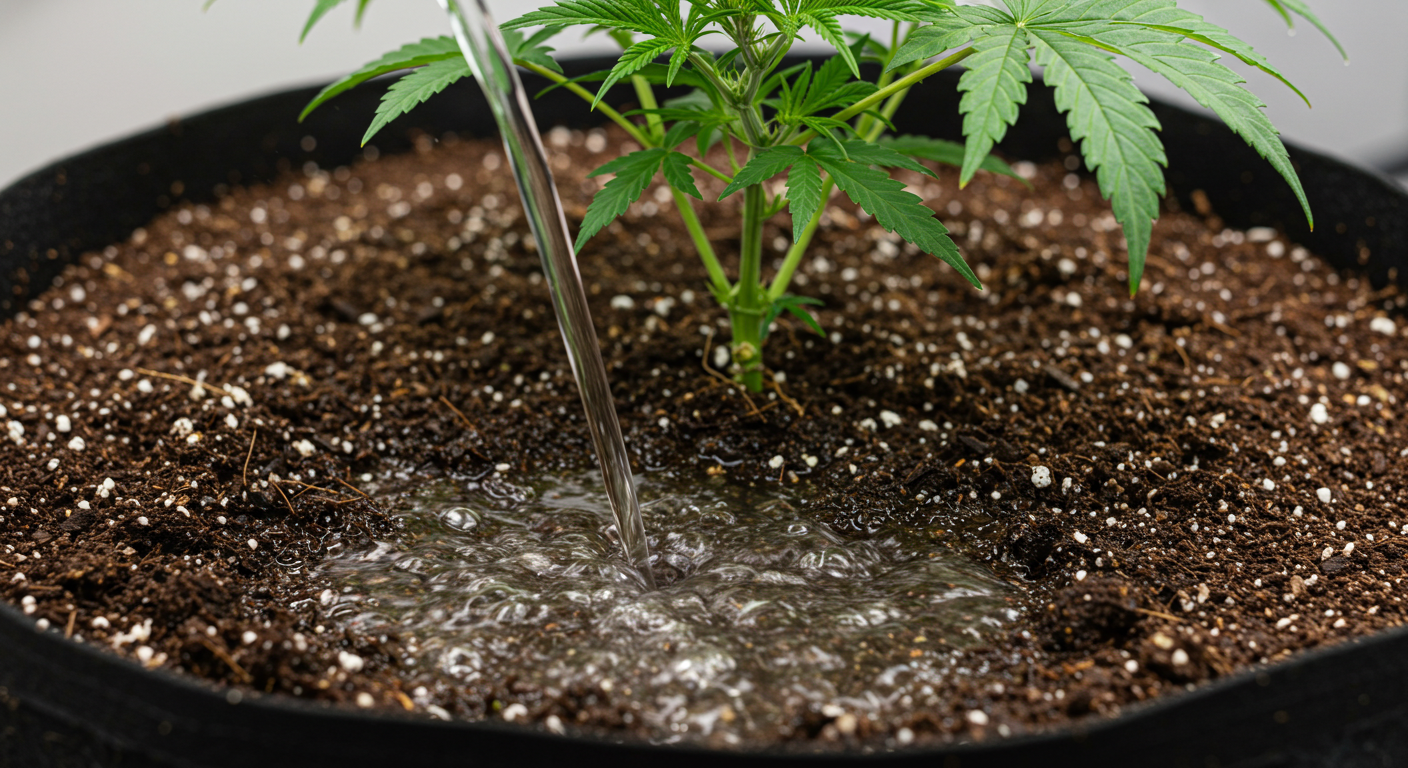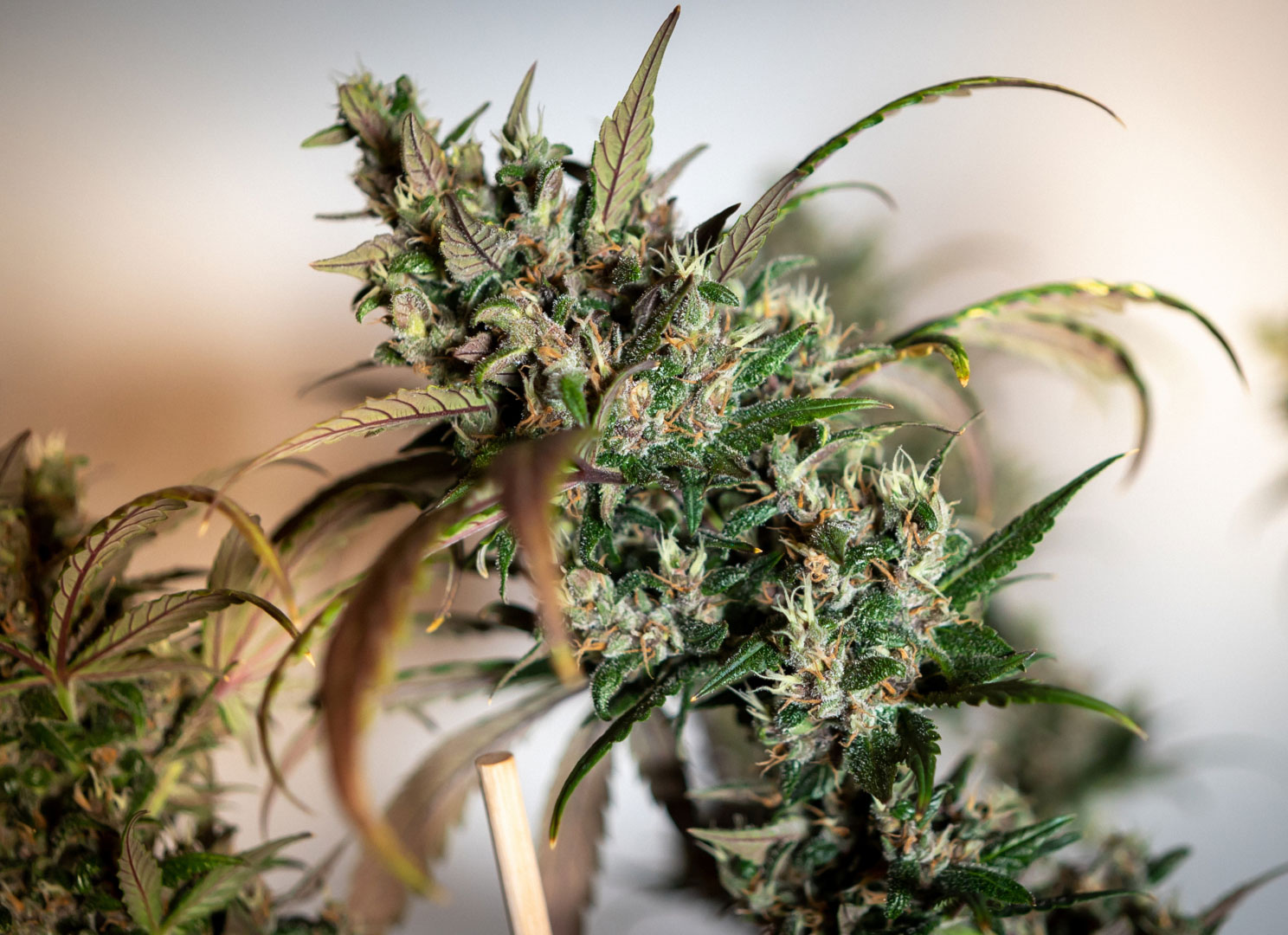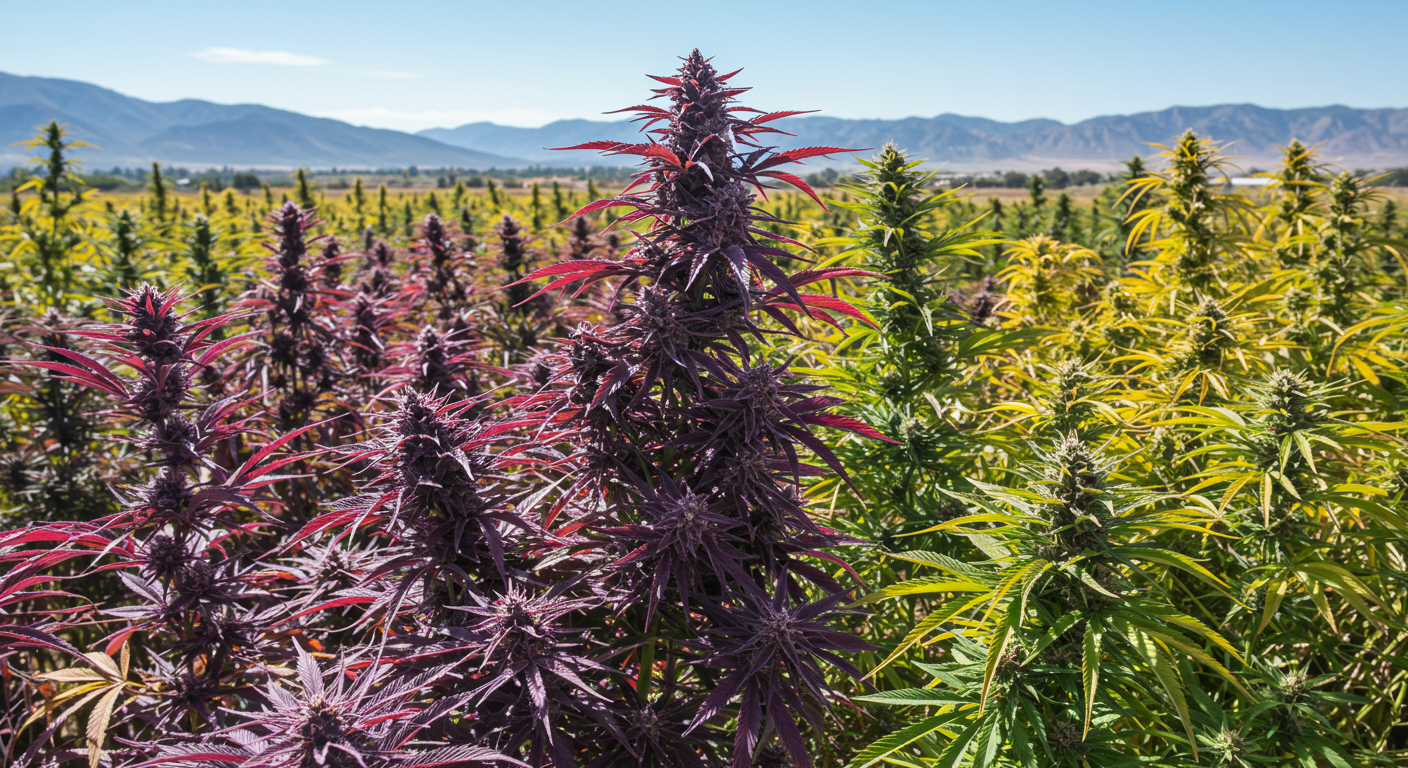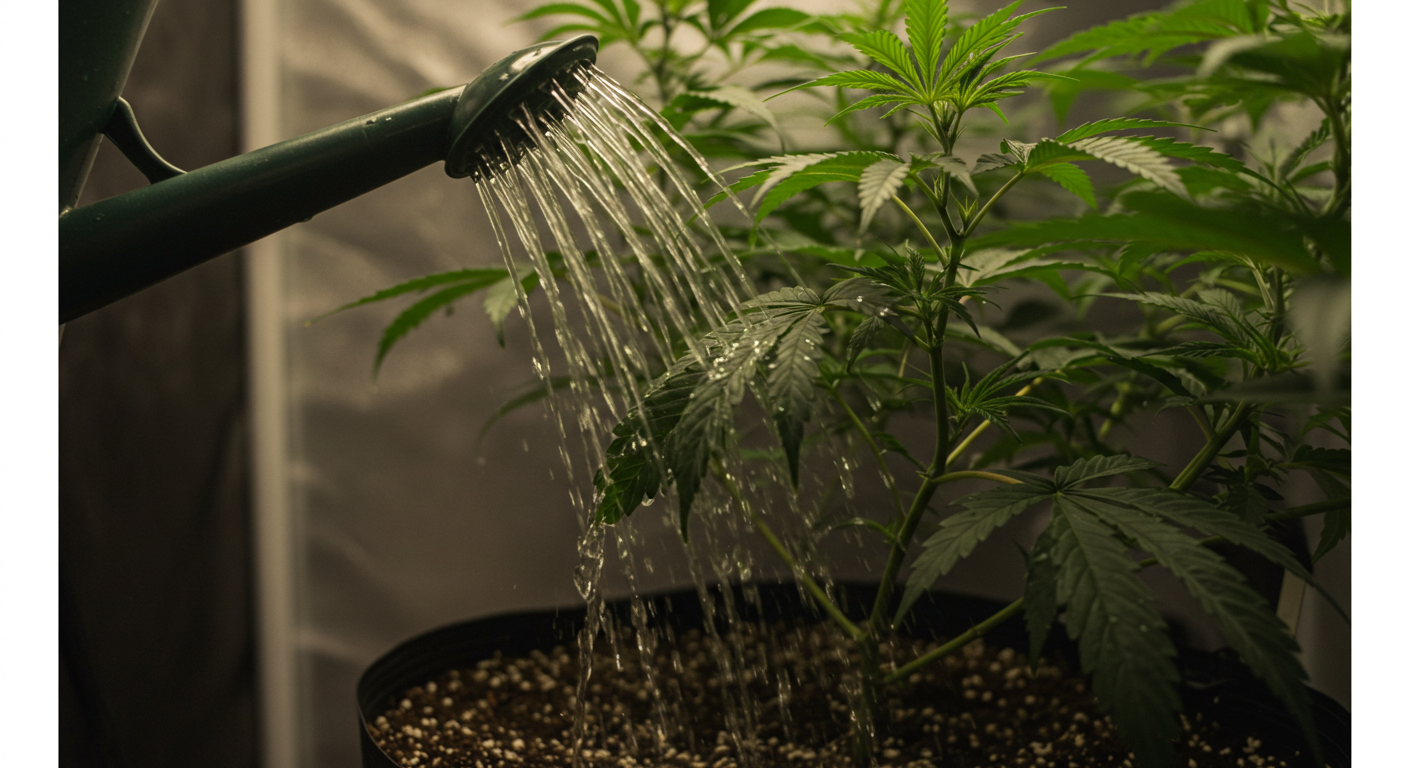
The Truth About Flushing Before Harvest
Flushing means feeding cannabis plants only clean water (no added fertilizer) in the final days of flowering. In practice, growers give large waters (often pH-balanced) to literally rinse the root zone of residual nutrient salts. This practice grew out of general horticulture: leaching with water to lower a substrate’s salt level is a standard method for correcting nutrient imbalances. In ornamental horticulture, growers routinely drench soils to reduce electrical conductivity and prevent salt burn. Cannabis cultivators picked up on this technique—dubbed “flushing”—over the decades, believing it might improve bud quality. In other words, flushing originated as a way to mitigate excess fertilizer salts, and later became associated with cleaner-smelling, better-burning flower.
How Flushing Works
Flushing essentially floods the growing medium and roots with plain water. In soils and organic media, nutrients are held on soil particles and in microbial pools. As one horticultural analysis explains, flushing a charged medium first drives off easily mobile nutrients (like nitrates and phosphates), which the plant then scrambles to retrieve from older leaves. Continued watering dissolves positively charged ions (K⁺, Ca²⁺, Mg²⁺) off the soil, washing them out of the root zone. Because organic soils have a strong “buffer,” they tend to release nutrients slowly under flush. In practice, this can leave the medium with an unpredictable nutrient profile: nutrients may be unevenly depleted or remain bound in soil colloids. Plants do continue growing during a flush – their buds may still expand even as soil nutrients are being removed.
By contrast, hydroponic and inert media behave differently. Rockwool, coco, or water reservoirs have little to no cation-exchange buffer. A pre-harvest flush in hydroponics effectively removes nearly all nutrients within just a few days. Because hydro systems feed directly via water, stopping nutrients immediately starves the plant – any reserves in solution are quickly gone (often within 1–2 days). In short, soil-grown plants may linger on bound nutrients longer, whereas hydroponic grows see a rapid nutrient drop when feeding stops.
Regardless of medium, flushing targets salt buildup in the root zone, not the plant tissue. By late flower, cannabis plants naturally slow or halt nutrient uptake and remobilize internal stores. In this senescent stage the plant takes up very little new NPK, so flushing mainly cleans the medium rather than “pulling” nutrients out of the buds themselves. (Notably, nutrient levels inside buds are orders of magnitude higher than in the soil, so it would take extreme conditions to leach them out.)
Flushing Methods
Growers use several approaches to flush:
-
Water-only flush: Simply water with plain, pH-balanced water (often tap or RO water) instead of nutrient solution during the final weeks. Many do repeated heavy irrigations (e.g. 2–5× pot volume) so that runoff becomes very low in salts. This classic method relies on repeated rinsing to purge leftover fertilizer.
-
Gradual taper: Instead of an abrupt cutoff, some feeds gradually reduce nutrient strength in steps (e.g. 50%, then 25% of normal feed) before switching to plain water. The idea is to ease the plant off fertilizers and slowly use up remaining nutrients, rather than shocking it with a sudden deprivation.
-
Enzyme or microbial flush: Specialized additives claim to “digest” leftover salts. For example, enzyme products (often containing bacterial amylases or proteases) are added to the last irrigations. These enzymes break down insoluble salts and organic residues in the soil, helping to clean the medium more thoroughly. Likewise, some organic growers rely on beneficial microbes or fungi to consume unused nutrients in living soil during late bloom. A common tip is to use a blend of different enzymes or microbes to maximize breakdown of complex residues.
-
Organic vs. synthetic regimens: Practices vary by feeding system. With synthetic fertilizers (chemical nutrients), flushes tend to be longer (often 1–2 weeks) because synthetic salts can build up in the medium. In organic or living-soil grows, the soil’s ecosystem can naturally recycle residues. Many organic growers simply stop adding amendments in the final week rather than dumping excessive water, trusting soil microbes to finish consuming the nutrients. In short, heavy synthetic feeding usually calls for an aggressive flush, whereas well-designed organic soils may need only minimal or no dedicated flush (beyond stopping feed).
Purpose and Claimed Benefits
Advocates of flushing cite several presumed benefits for smoke quality:
-
Smoother taste and burn: It is widely claimed that flushing removes harsh-tasting fertilizer residues or excess chlorophyll, yielding a cleaner, smoother smoke. The idea is that flushing reduces chemical or metallic tastes from leftover nutrients, and that the plant will consume its internal reserves for a milder profile.
-
Cleaner ash color: Another common belief is that flush makes buds burn to a white or light-gray ash instead of black. Smokers often associate pure white ash with high-quality cannabis. The folklore goes that well-flushed cannabis with minimal residual minerals produces pale ash, whereas unflushed buds yield dark, sooty ash.
-
Better burn quality: Growers also observe that a flushed plant should combust more completely, leaving less char or black residue. Some say bud from flush-treated plants burns slower or more evenly, improving the smoking experience.
In practice, however, scientific tests have failed to confirm any clear advantages. A blinded taste panel found no significant improvement in flavor or smoothness due to flushing. In one trial, most testers actually preferred the non-flushed buds: for example, 36% rated the smoke from a 0-day flush as smooth, whereas only 19% found the 14-day flush sample smooth. Likewise, ash color was predominantly black or gray regardless of flush length — no flush treatment produced reliably white ash. In short, laboratory evaluations and taste tests have generally shown no meaningful difference in smoke quality or ash between thoroughly flushed and unflushed flowers. Common observations like white ash often come down to factors like combustion temperature, curing, or fillers rather than the presence of residual salts.
Scientific and Grower Debate
The effectiveness of flushing has become a major topic of debate. Rigorous studies now challenge the conventional wisdom. Multiple experiments have found that normal pre-harvest flushing does not change bud chemistry or yield. For example, early studies reported that a short (two-week or less) flush before harvest did not affect elemental nutrient or cannabinoid concentrations in the dried flowers, nor the overall yield. These results were repeated in later trials, where plants flushed for 0, 7, 10, or 14 days showed no significant differences in bud weight, THC, CBD, or terpene levels. In other words, flushing reduced fertilizer input but barely changed what ended up in the bud.
One explanation is biological: by late flowering, cannabis naturally shuts down nutrient uptake and remobilizes nitrogen and other elements from older leaves to new growth. In that phase, adding extra water while halting feeds doesn’t cause a dramatic change inside the plant, because it was already drawing from its internal stores. Researchers note that nutrient uptake slows naturally in the plant’s final stages. In effect, a flush mostly empties whatever remained in the pot or reservoir without affecting the buds themselves. This is reinforced by the fact that internal nutrient levels are vastly higher inside plant tissue than in the soil. Flushing the root zone simply cannot physically wash out nutrients already locked into bud tissue.
Some data even suggest flushing can hurt yields. In new controlled trials, extended flushing was found to reduce flower weight. One study reported that biomass dropped as flush duration increased. Another recent peer-reviewed paper concluded that thoroughly leaching the substrate is fiscally and environmentally irresponsible because it discards large amounts of fertilizer and lowers yield. In short, controlled-environment research has observed detrimental effects from long flushes without any clear quality gain.
Importantly, growers and scientists alike point out a key misconception: flushing does not extract stored nutrients from the buds. Nutrients in bud tissue are locked in by plant biology, and simply watering the roots cannot undo that. Nutrient concentrations inside plant cells can be thousands of times higher than in the soil, so rinsing the root zone mainly affects unused fertilizer in the medium, not the bud. This means claims that flushing somehow purges the bud are not supported by plant physiology. In summary, both empirical trials and expert analysis indicate that conventional flushing has little to no measurable effect on bud cannabinoid or terpene content, taste, or smoothness — contrary to old grower lore.
Risks and Downsides
Flushing is not without trade-offs. The biggest risk is nutrient starvation. Cannabis flowers are still actively growing in the last couple of weeks. If you cut off fertilizer during that peak growth, the plant slows or stops adding weight. In fact, one experiment found that a plant flushed in the final week consistently ended up lighter than an identical plant kept fed. In other words, running water in the final flower stage is essentially taking production away from the plant in the name of “quality.” One analysis estimates that a one- to two-week flush can shave off roughly 12% of total yield and production cycles. For commercial growers, this lost yield (and the room turnover time) is a significant cost.
Flushing can also stress the plant. As nutrients are withdrawn, deficiency symptoms such as leaf yellowing and necrosis appear sooner. For example, plants flushed for 10–14 days showed much more yellow, brittle leaves at harvest than plants given nutrients. Growers must be careful not to mistake normal late-flower yellowing for a harmful deficiency. In reality, chlorophyll breakdown and nitrogen movement from lower leaves is a normal part of flowering, whether or not a flush is done. However, overly aggressive flushing can exaggerate this effect. If flushing causes tissue damage or deficiencies that are mistaken for nutrient problems, growers might take incorrect corrective actions, like resuming feeding or adjusting pH mid-flower, that further stress the plants.
Another downside is resource waste and complexity. Heavy flushing wastes water and nutrients — dozens of liters can wash through each pot by harvest. If flushing truly doesn’t improve quality, this is wasteful. Sudden pH shifts from excessive watering can also swing root-zone chemistry unfavorably unless buffered very carefully. And in living soil systems, flushing can wash out beneficial microorganisms and minerals that help the soil ecosystem thrive.
In summary, the main risks of flushing are slowed growth and yield loss, potential nutrient deficiencies beyond what the plant naturally experiences, and unnecessary consumption of resources. Home gardeners should weigh these against any perceived benefit. Over-flushing can end up doing more harm — or simply no good — if not justified by a clear result.
Flushing Recommendations
Given the debate, many growers choose a middle path and tailor flushing to their system:
-
Soil/Coco: In most soil setups, a short flush of plain water 1–2 weeks before harvest is common practice. Soil can hold onto nutrients, so plan about a week of flush. Water heavily (around 3–5× pot volume) until runoff EC is very low or clear. For coco or mixed media, similar timing (7–10 days) is typical. If you used heavy synthetic feed throughout, lean toward the longer end of that range; if your medium is peat/perlite or a light organic mix, you might need less.
-
Hydroponics: Hydro systems flush much faster since no soil holds reserves. When you switch to plain water, nutrient levels in the reservoir plummet within 1–3 days. Many hydro growers simply switch to water or very low nutrient solution 3–7 days before harvest. Unlike soil, hydro roots aren’t buffered, so a 1–2 day switch already starves the plant; in practice, 4–5 days is often enough if water pH is maintained properly.
-
Light vs. heavy feeding: Adjust flush length based on how strong your feeding has been. A lightly fed plant may need only a few days to burn through excess, while a plant over-fertilized for months might require a longer rinse.
-
Organic soil/hydroponic: If you grow in living soil or with purely organic amendments, flushing needs are often minimal. Well-buffered organic soils release nutrients gradually, and their microbes can help tie up or transform residues. In those cases, simply stopping feeding a week before harvest (without a heavy flush) is usually sufficient. Many organic growers find that by harvest, the soil’s extra nutrients have already been used up, so an aggressive flush isn’t necessary.
-
Hybrid setups: For mixed methods (for example, organic fertilizer in coco or hand-watered synthetic in soil), use your judgment. A light watering schedule in the last week is almost never detrimental, but don’t overdo it.
Regardless of medium, it’s wise to time flushing with plant maturity. Monitor trichomes, pistil color, and overall plant health as you approach the end of bloom. There’s no one-size-fits-all: some growers finish heavy flush exactly when trichomes go cloudy, others flush for a fixed 10–14 days. Reliable cues such as clear, cloudy, or amber trichomes and firming buds are better guides than the calendar alone.
Final Thoughts
The best approach is evidence-based and plant-driven. Rigid flushing schedules often overlook the plant’s actual needs. Instead of blindly flushing because “everyone does,” Weedth encourages growers to observe and test. If your plants are showing healthy ripening — green leaf margins, trichomes turning milky or amber — an extra day or two of plain water is unlikely to hurt. But if they already appear starved or stressed, consider stopping the flush early. Likewise, if you’ve never had problems with salts and your buds taste clean, you might shorten or skip an intense flush altogether.
Many experts now suggest doing exactly that: run your own side-by-side trials. For example, try flushing half your plants and keeping the other half on a very mild feed during the final week. Dry and cure both batches under identical conditions, then compare their aroma, burn, and yield. This personal experiment can reveal what works best in your unique setup. As one cultivation column put it, the choice to flush or not should be based on real evidence — growers should use their own experience and see if flushing truly makes a difference in their smoke.
Above all, trust the plant and good science over superstition. White ash, smooth smoke, and sweet taste are lovely goals, but they have many causes. Proper curing, phenotype, and harvest timing often play a far larger role than flushing. If you do flush, do it with purpose — confirm that your nutrients are in excess first, then use just enough water to clear the runoff. And if you’re uncertain, remember that many growers who have skipped flushing report being perfectly happy with their buds. Ultimately, Weedth’s aim is to empower you: armed with scientific insight and real data, you can make an informed call on flushing that suits your medium, strain, and goals.
Share this article
Written by : alexbuck
Follow us
A quick overview of the topics covered in this article.
Latest articles
December 24, 2025
December 24, 2025
December 24, 2025
December 24, 2025





